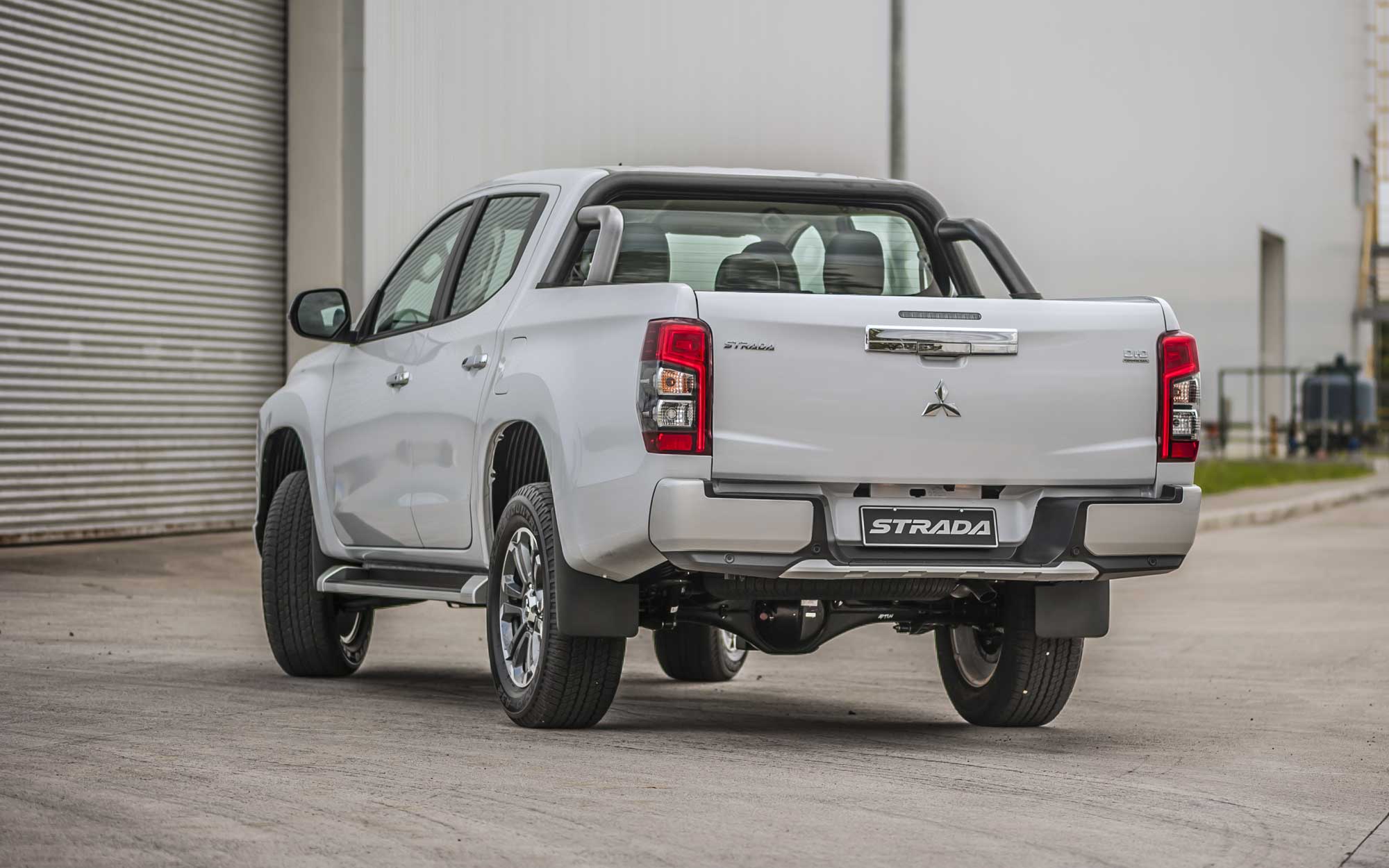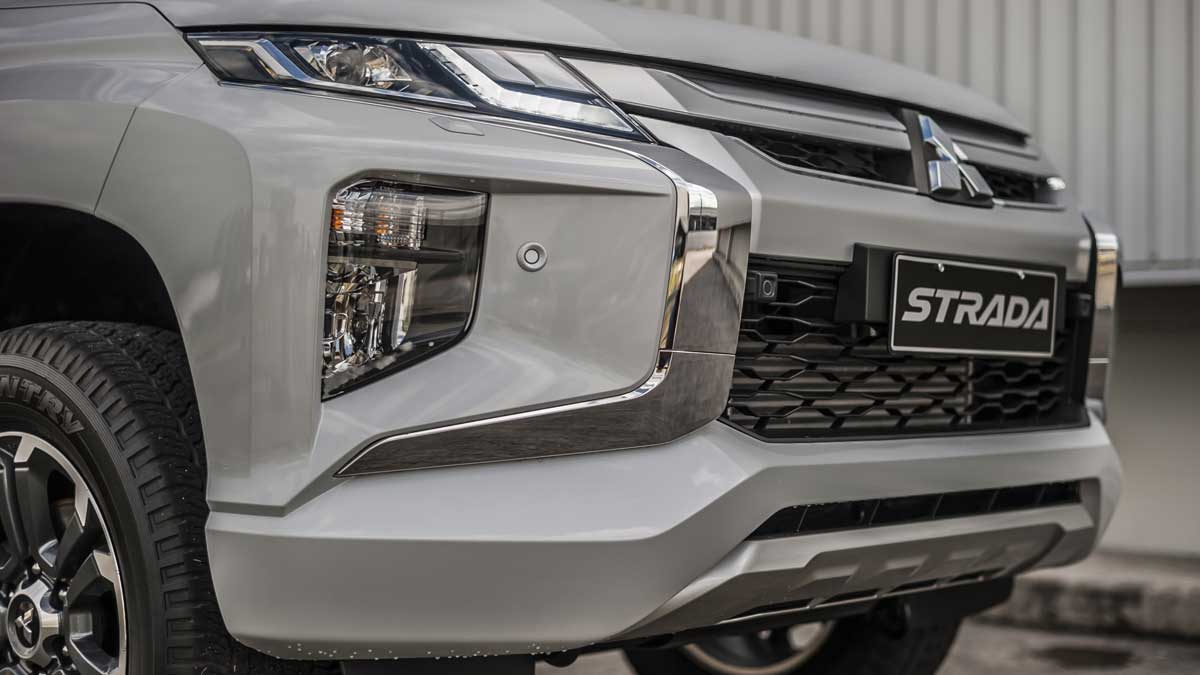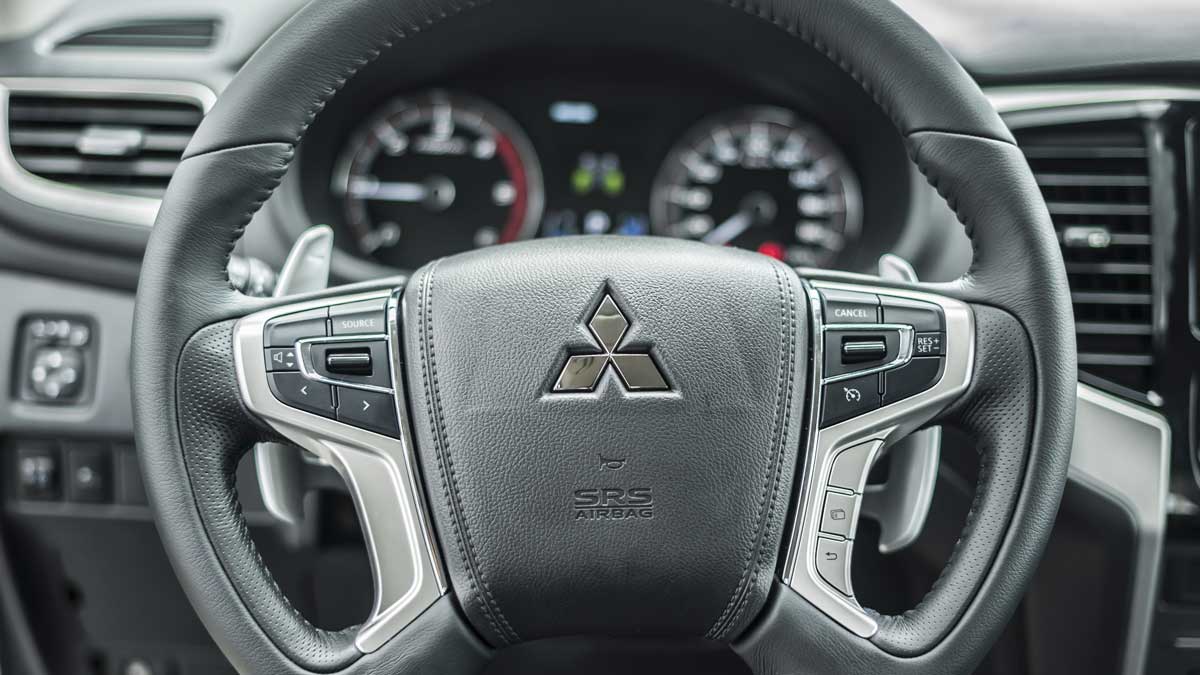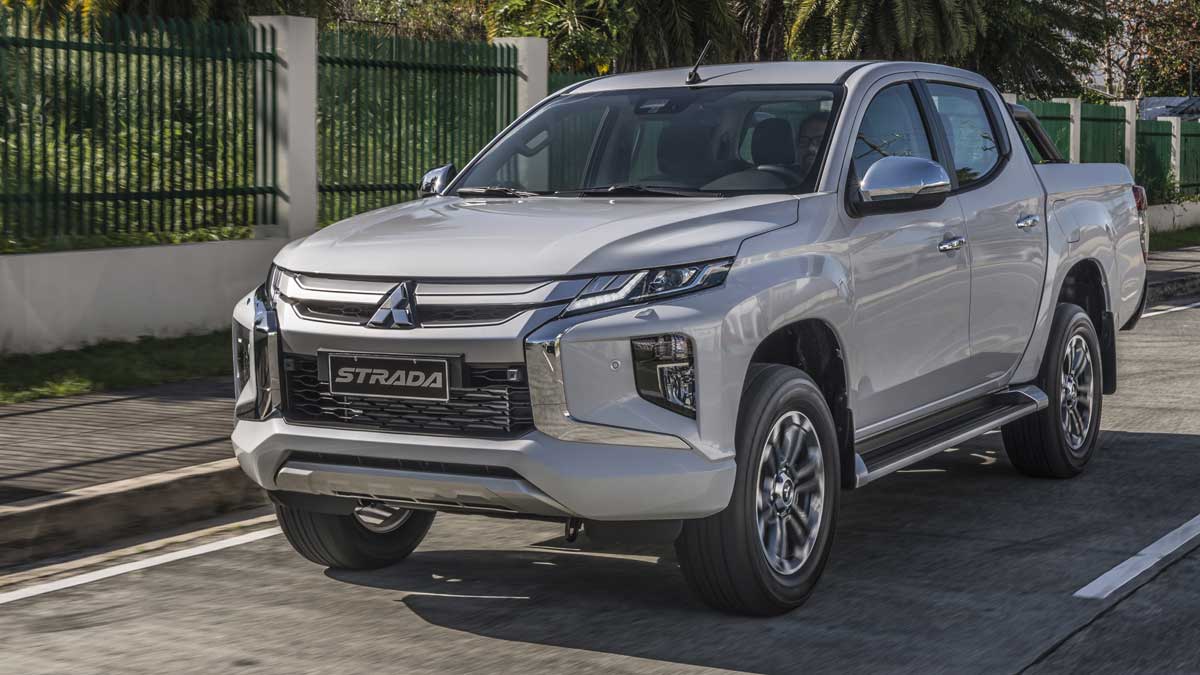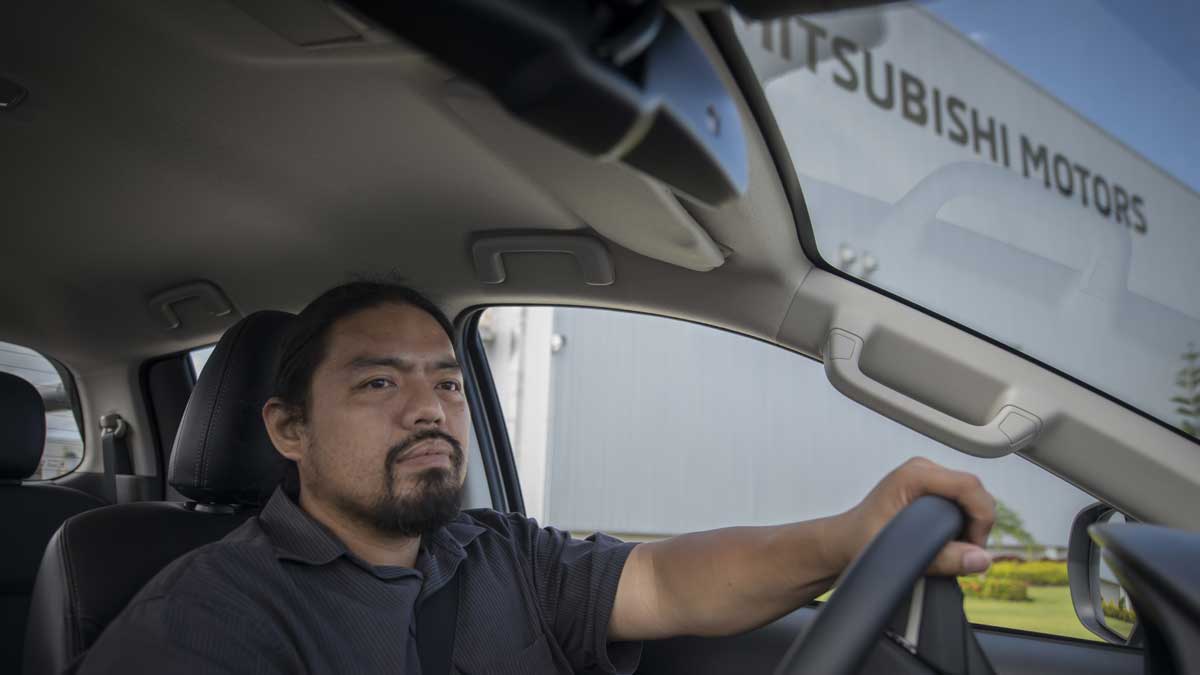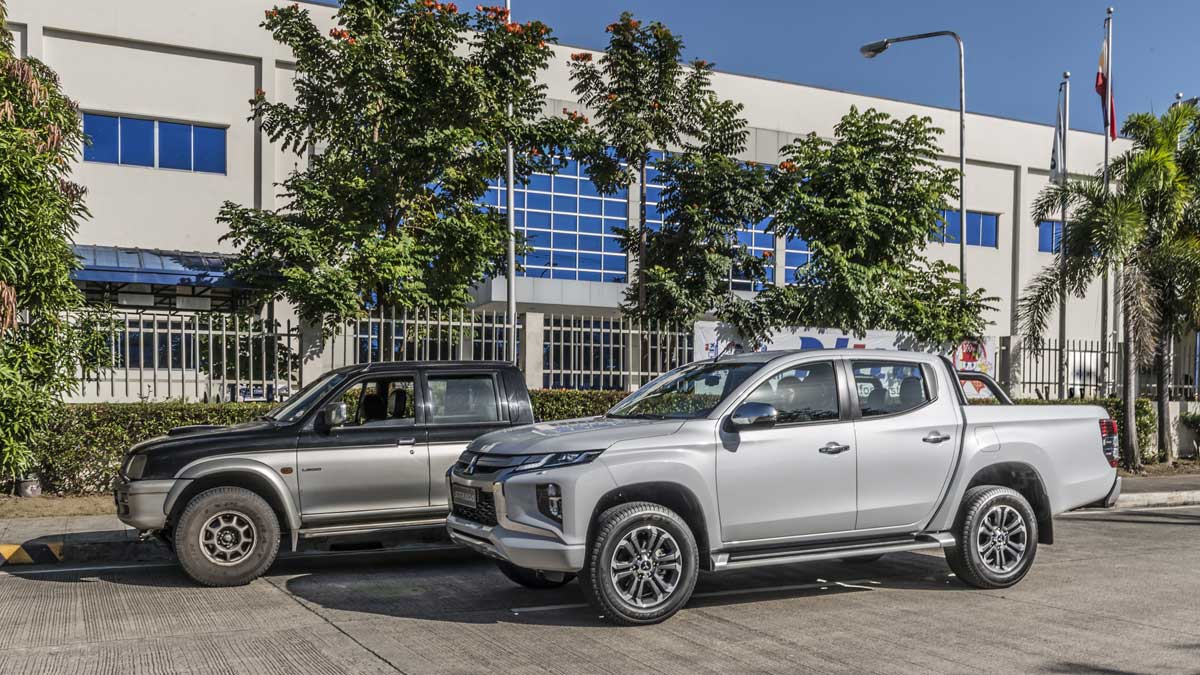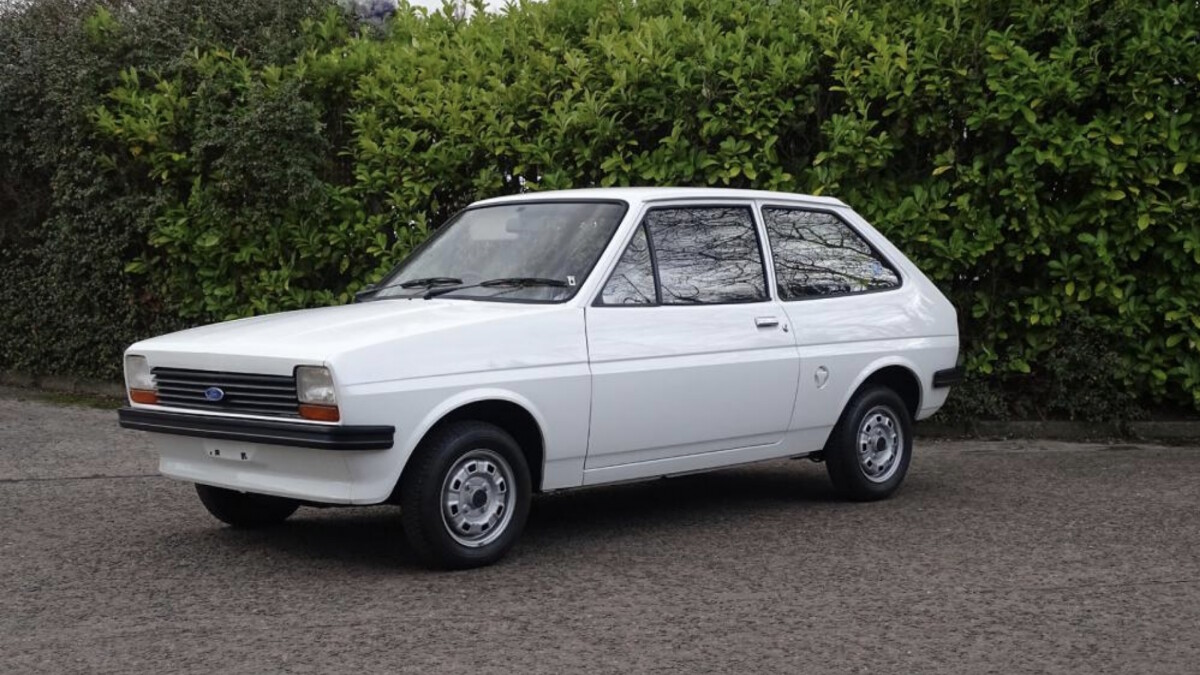It’s rather intimidating walking into the Mitsubishi plant for the first time. I haven’t been here since the old tenant of the compound moved out, and I’m still trying to get my bearings. I’m walking past rows and rows of brand-new Mirages, up to the towering new stamping plant that churns out body panels for these tiny little cars. It’s a long walk from the gate, where I’ve had to leave my car and my camera, and I’m starting to sweat. I finally round the corner of the plant and see the Strada sitting near the back entrance, with electric forklifts buzzing back and forth around it.
I know what to expect, seeing as how the Montero Sport already debuted the Dynamic Shield look three years ago. But it’s still impressive. The Strada mixes features from the Montero Sport and the Xpander, with the same headlights as the former and the big, prominent light boxes mounted high up on the bumper. On the Xpander, those are headlights. Here,

